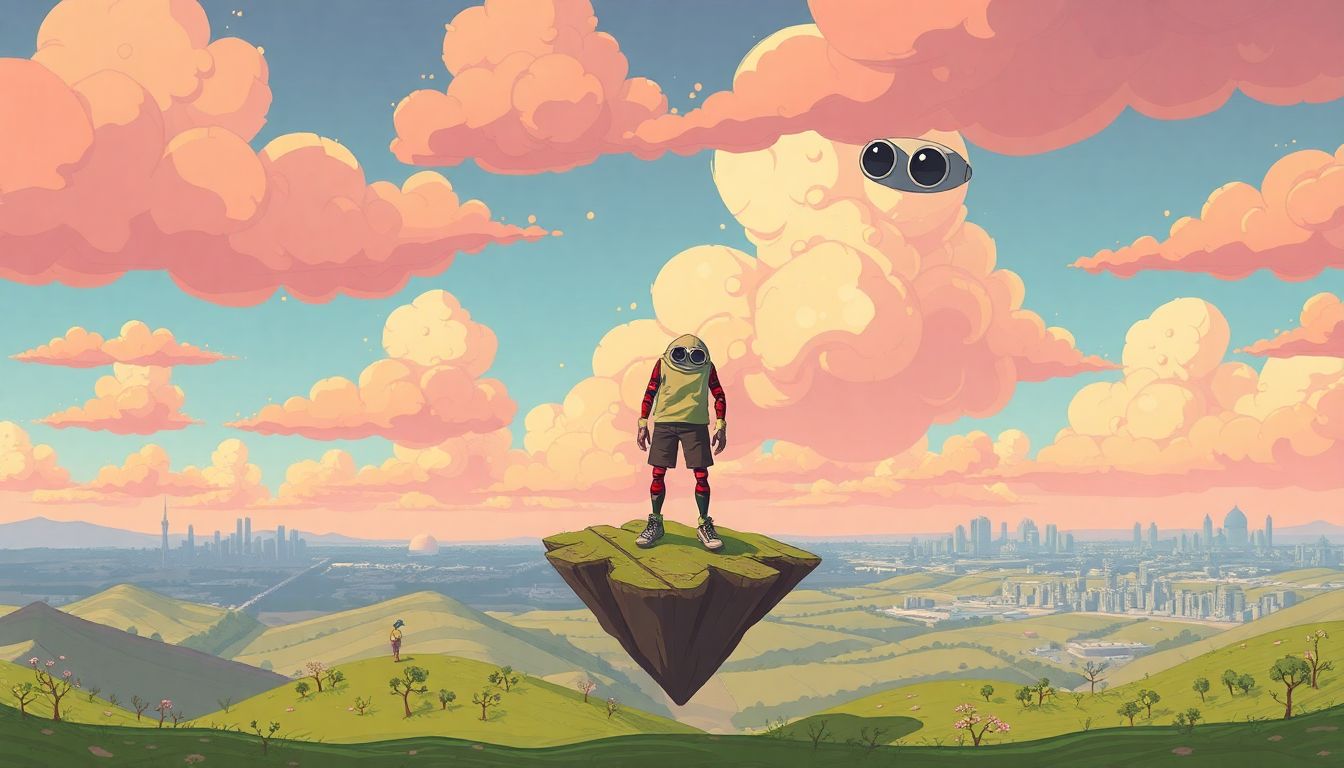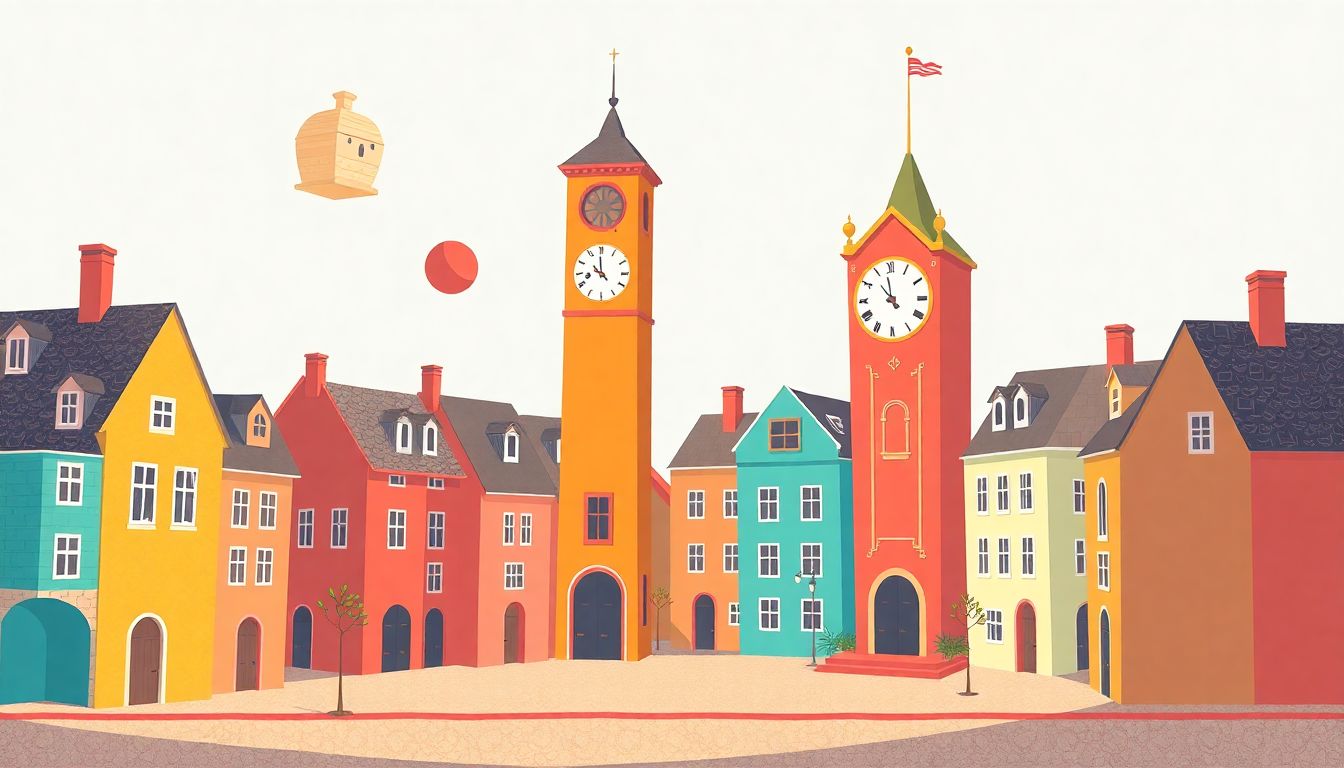Feeling a bit lost when it comes to writing absurdist fiction? You’re definitely not alone. Many writers struggle with the unconventional themes and bizarre plots that define this unique genre, wondering how to embrace the randomness without losing their narrative thread.
But don’t worry! If you stick around, you’ll discover some fantastic prompts designed to inspire your creativity and help you dive headfirst into the wonderfully absurd. By exploring these ideas, you may just find the quirky inspiration you’ve been seeking.
In the sections ahead, we’ll break down effective prompts for bizarre characters, strange settings, and captivating storylines. By the end, you’ll be ready to write your own delightful absurdities!
Key Takeaways
- Absurdist fiction involves strange plots and unpredictable characters, often exploring themes of meaninglessness.
- Use creative prompts to spark bizarre ideas, such as time flowing backward or animals expressing disdain for humans.
- Develop eccentric characters with illogical motivations to enhance storytelling, like a paranoid detective or a light-switch collector.
- Create unusual settings that reflect absurdity, such as a town where weather changes based on public opinion.
- Craft surreal storylines that challenge conventional structures and surprise readers with unexpected twists.

Top Prompts for Writing Absurdist Fiction
Absurdist fiction thrives on the unexpected, the strange, and the humorous. To kickstart your creativity, here are some engaging prompts you can use with ChatGPT.
- Create a story where time flows backward, and the characters don’t realize it until the end.
- Write about a group of philosophers trapped in a room that has a door only they can open, but they’re too busy debating existence to leave.
- Imagine a cat that believes it is the ruler of all humans—what chaos ensues?
- Invent a world where people get paid based on how absurd their dreams are.
- Describe a situation where all animals have suddenly gained the ability to speak, but only to express their disdain for human habits.
Understanding Absurdist Fiction: Key Elements
Absurdist fiction often grapples with themes of meaninglessness and the human condition. Key elements include existential dilemmas and characters who confront the absurdity of their reality.
Characteristic features include illogical plots, irrational dialogue, and sudden shifts in mood that create a sense of unpredictability.
Notable authors in this genre, such as Albert Camus and Samuel Beckett, explore these ideas through unconventional narrative techniques.
Philosophically, absurdism emphasizes a fundamental conflict between humans’ desire to find meaning and the universe’s indifferent nature. Its essence is beautifully captured in the idea that life can be simultaneously trivial and profound.
Examples of Absurdist Fiction Prompts
If you’re looking for inspiration, here are some ready-made prompts that can lead to quirky and surreal stories.
- Write a scene set in a diner where the food has opinions about the patrons.
- Sketch a character who runs a company dedicated to planning surprise parties for inanimate objects.
- Describe a circus where the performers include tax advisors and accountants, and their acts are impossibly mundane.
- Imagine a dystopian society where laughter is outlawed, and the consequences of being caught laughing are severe.
- Craft a tale about a talking plant that offers unsolicited life advice to its owner, leading to unexpected consequences.
How to Use Prompts for Absurdist Characters
Creating unique characters in absurdist fiction can greatly enrich your story. Start by focusing on eccentric traits that defy logic.
Think about character motivations that are contradictory or nonsensical, such as a character who is obsessed with collecting light switches because they believe it’s an art form.
Utilize prompts like:
- Design a character who believes they’re the last human on Earth, despite constant interaction with others.
- Create an antihero who only makes decisions based on the flip of a coin.
- Imagine a paranoid detective who suspects everyone is a figment of his imagination.
By exploring these quirks, you can develop relationships that challenge traditional narratives, like a parent who just wants their child to join the circus, simply because they think it would be “funny.”

Creating Bizarre Settings with Prompts
Setting plays a crucial role in absurdist fiction; it can be just as eccentric as the characters themselves.
Consider environments that reflect absurdity through unusual features or rules.
Prompts you can use include:
- Create a world where gravity works in reverse, and characters must learn to navigate floating objects.
- Describe a town where every building is a different color, yet they all emit the same sound at noon.
- Imagine a forest made entirely of everyday objects, like forks and socks, where creatures speak in puns.
- Write about a city where the weather changes based on public opinion, and citizens hold daily polls to decide if it should rain or shine.
- Craft a bizarre setting in an amusement park where the rides only operate based on your emotional state.
These prompts can help you construct settings that complement the absurdity of your narrative.
Additionally, think about how the setting affects your characters and their actions. A surreal environment can lead to unexpected plot developments and character interactions.
Developing Unique Storylines for Absurdist Fiction
Crafting storylines in absurdist fiction is all about breaking the conventional mold.
A unique storyline often features a series of nonsensical events that challenges traditional narrative expectations.
To help you brainstorm, try these prompts:
- Write a story about a man who decides to prove he can step outside reality, only to find himself stuck in various versions of his own life.
- Imagine a detective solving a case where the clues are everyday items that lead to more bizarre puzzles.
- Craft a narrative centered around a town where everyone is required to announce their thoughts out loud at random intervals, leading to chaotic conversations.
- Describe a saga that begins with an ordinary grocery run but spirals into a parallel universe where food items are sentient.
- Invent a plot where a character’s life changes dramatically after receiving a letter written in a language that doesn’t exist.
Ensure your storyline maintains a flow of absurdity while keeping the reader engaged with unpredictable twists.
Remember, the goal is to blend the ordinary with the extraordinary, leading your audience through a narrative that surprises and entertains.

Tips for Writing Absurdist Dialogue with Prompts
Absurdist dialogue is key to creating that quirky vibe in your writing.
Start by focusing on non-sequitur exchanges where characters respond in ways that don’t quite match the context.
Use prompts like:
- Write a conversation between two friends discussing the meaning of life, but they keep getting distracted by the sandwich one of them is eating.
- Create a dialogue between a cat and a toaster, where the toaster complains about being ignored.
- Imagine a scene where a character is trying to make a serious point about time travel but ends up arguing about their favorite color instead.
Remember to layer sarcasm and irony into the dialogue.
Characters can have different interpretations of the same situation, leading to humorous outcomes.
The more absurd the exchange, the more it enhances the overall atmosphere of your story.
Feedback and Revision: Using Prompts to Improve Your Work
Feedback is crucial when polishing your absurdist narratives.
Start by sharing your draft with someone who appreciates the absurd, as they can offer unique insights.
Consider prompts like:
- Ask your reader to identify moments where the absurdity fell flat or didn’t connect.
- Create a list of elements in your story that seemed too logical for an absurdist piece.
- Encourage them to suggest one outrageous twist for each act of your story.
When revising, focus on tightening dialogue and enhancing the absurd elements.
Don’t be afraid to remove anything that feels overly sensible or conventional.
Iterate on your drafts, experimenting with dialogue, settings, and character motives until the absurdity shines through.
Resources for Further Inspiration in Absurdist Fiction
Looking for more inspiration? There are plenty of resources out there!
Start with a reading list of absurdist literature, such as:
- “Waiting for Godot” by Samuel Beckett
- “The Stranger” by Albert Camus
- “The Metamorphosis” by Franz Kafka
Check out articles and essays on absurdism to better understand its themes and styles.
Utilize online writing workshops and forums where creators discuss absurd scenarios and share feedback.
Consider joining social media groups dedicated to creative writing prompts that often focus on the bizarre and improbable.
With these tools, you’ll have a wealth of inspiration at your fingertips to craft your next absurdist masterpiece.
FAQs
Key elements of absurdist fiction include the exploration of existential themes, illogical scenarios, bizarre characters, and a focus on the absurdity of human existence and communication, often with a darkly comedic tone.
Create unique characters by exaggerating their traits, placing them in absurd situations, and allowing them to interact in unconventional ways. Use prompts to inspire odd behaviors, motivations, and backgrounds that contribute to the absurdity.
When writing absurdist dialogue, focus on disjointed conversations, nonsensical exchanges, and extreme responses. Use prompts to spark unexpected turns and verbal absurdities, enhancing the surreal atmosphere and character interactions.
Prompts can provide fresh ideas, inspire creativity, and challenge your imagination. They can help you explore absurd scenarios, develop characters further, and refine your narrative, ultimately enhancing the overall quality of your writing.
